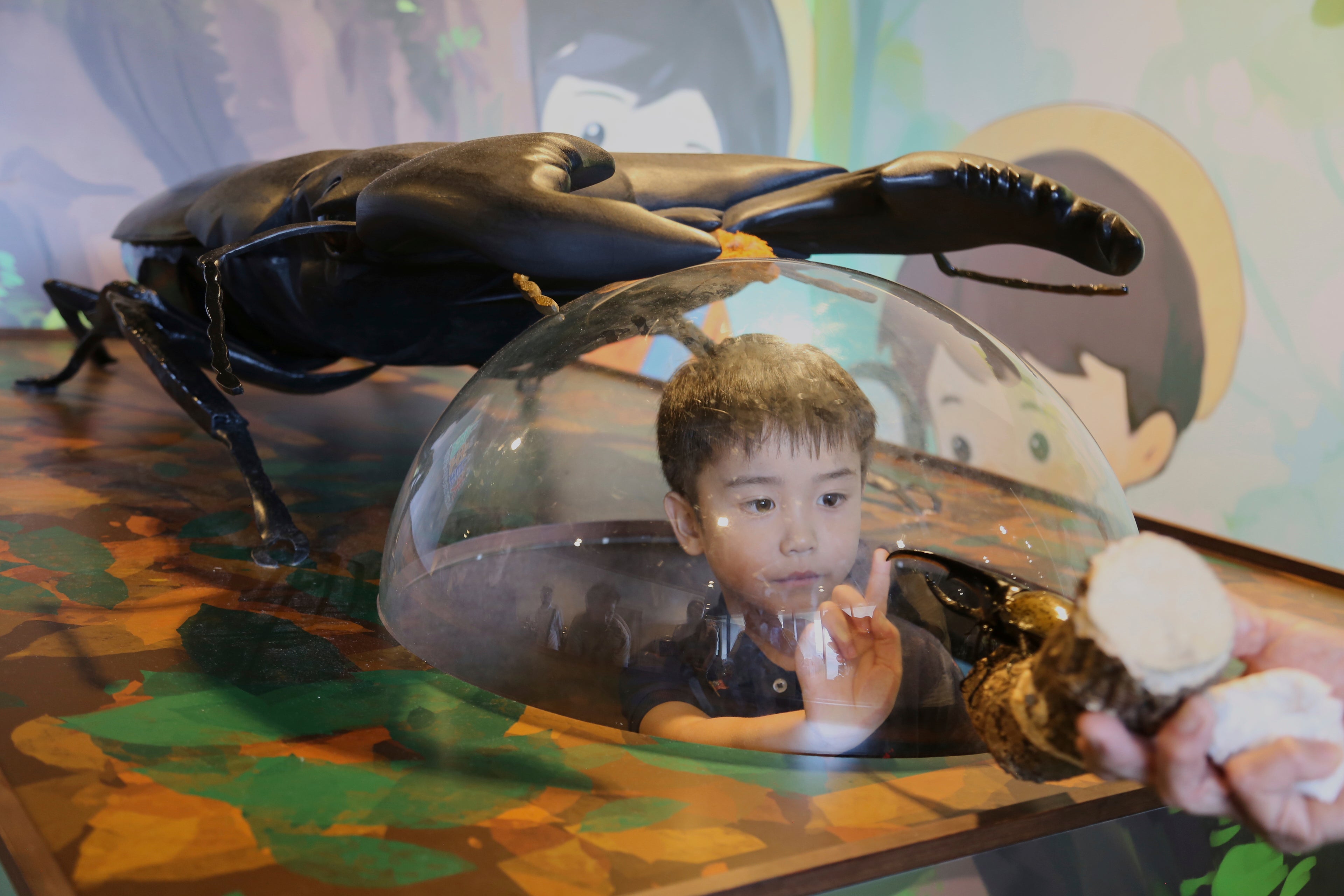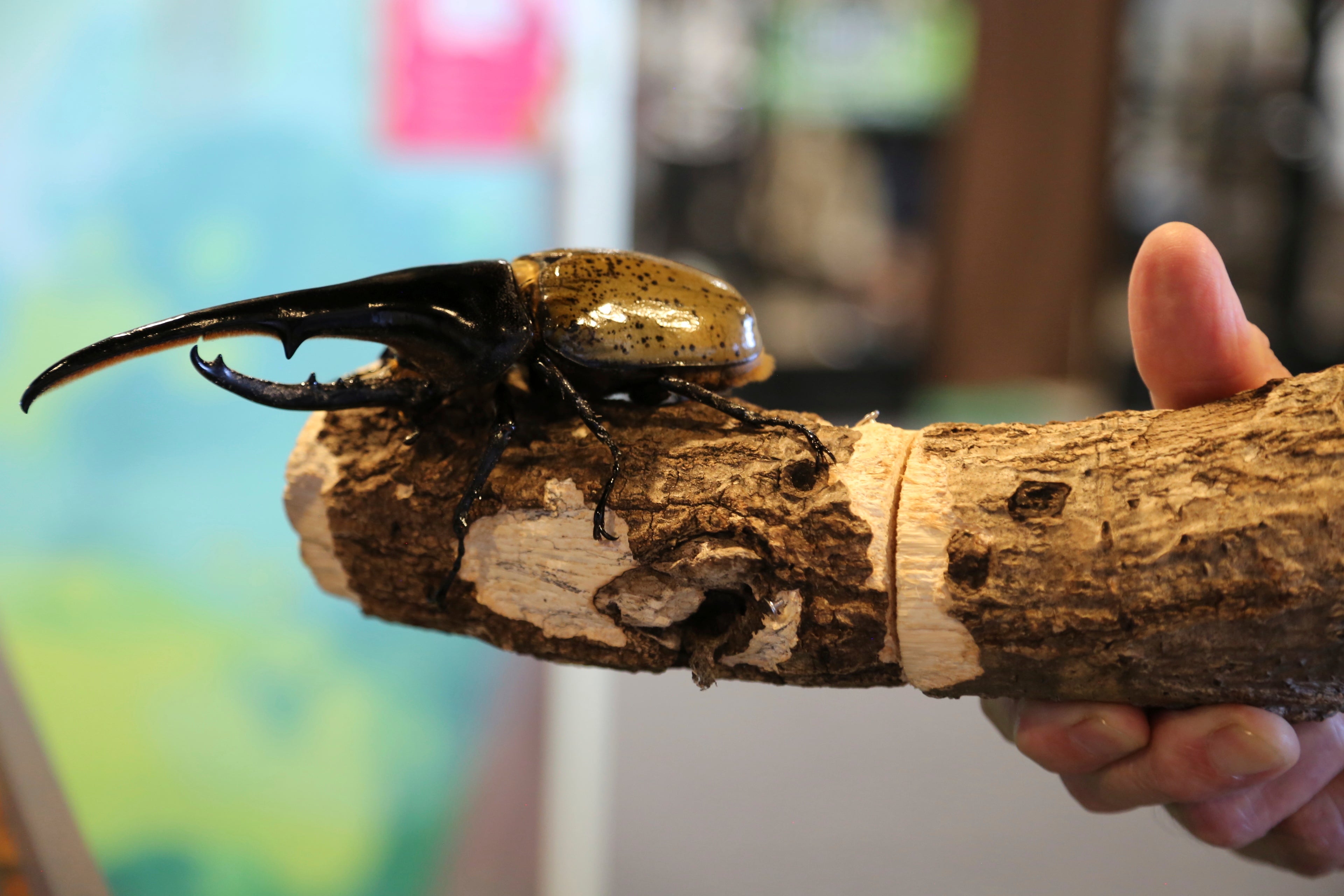While cuddly cats and playful puppies are common companions globally, in Japan, the humble bug holds an equally cherished place as a pet. Indeed, insects boast a profound cultural heritage, woven into Japanese life from the Heian era classic “The Tale of Genji” to popular modern-day manga and animation like “Mushishi”, which features insect-like supernatural creatures.
The Japanese appreciate the glitter of fireflies let loose in the garden or the gentle chirping of crickets kept in a little cage. Owners can feed them watermelon, though specialised jelly pet food is also widely available in stores, where the insects themselves are sold. More esoteric varieties can command prices of up to 20,000 yen (£105).
Here, these crawling and buzzing critters transcend the scientific realm of entomology. Celebrities openly boast about their fascination with bug-hunting as a hobby, much like a Western film star might discuss their yacht or golf score.
The bug as companion is an essential part of what’s observed, enjoyed and cared for in everyday life, reflecting a deeply rooted celebration of humankind’s oneness with nature.
“They are so tiny. If you catch and study them, you’re sure to discover something new,” says Munetoshi Maruyama, professor of bioenvironmental sciences at Kyushu University, whose fascination with bugs began as a child, like many Japanese.
“They are so beautiful in shape and form.”

One thrill that comes from studying insects is discovering a new species, simply because there are more than 1.2 million known kinds of insects, far more than mammals, which translates to a lot of undiscovered ones, said Maruyama, who has discovered 250 new insect species himself and shrugs that off as a relatively small number.
Japan differs from much of the West in encouraging interaction with bugs from childhood, with lots of books written for children, as well as classes and tours.
“In Japan, kids love bugs. You can even buy a net at a convenience store,” he said. “It’s fantastic that bugs can serve as a doorway to science.”
The fact some insects go through metamorphoses, transforming from a larva to a butterfly, for instance, adds to the excitement, allowing kids to observe the stages of a life span, Maruyama said.
Tracing the movement of bugs can be a way to study global warming, too, while so-called “social insects,” like bees and ants show intelligence in how they communicate, remember routes to find their way back to their nests or burrow elaborate underground paths as colonies.
Because bugs carry out important functions in the ecosystem, such as pollinating crops and becoming food for birds and other wildlife, human life isn’t ultimately sustainable if all bugs were to disappear from earth.

The love affair with bugs was clear at an exhibit in Tokyo, aptly called “The Great Insect Exhibition,” running through the end of this month at the Sky Tree Tower, where crowds of children gathered around trees inside indoor cages so they could observe and touch the various beetles.
One kind of rhinoceros beetle known as Hercules, which originated in the Caribbean but is now also found in Japan, is reputed to be the biggest beetle on record, although it’s just several inches in length. Its back coat is a shiny khaki color, though such shades change depending on the season. The other parts, like its horn and delicate but spiky legs, are dark.
“We want the kids to feel the emotions and joy of actually touching the insects here. That’s really positive for the workings of a child’s brain,” said Toyoji Suzuki, one of the event’s organizers, who insisted everyone, including adults, touch the bottom of the beetles’ horns and wings to feel how surprisingly soft and fluffy they are.
Four-year-old Asahi Yamauchi, who was at the exhibit with his grandmother and getting his photo taken inside a special installation that made it look like he was inside a beetle, loves bugs as much as he loves dinosaurs and has what he called a cute beetle as a pet at home.
“My friend had one so I wanted one,” he said.



